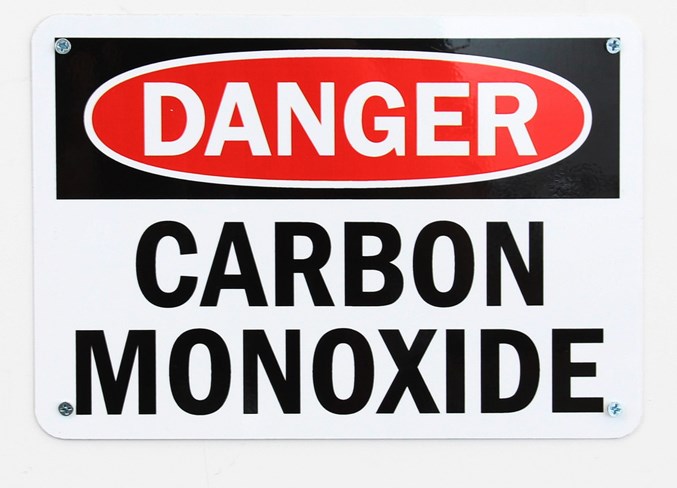Earlier during this cold snap, my wife and I encountered a scary situation.
In the middle of a very, very cold night, our carbon monoxide detector began chirping.
Alarmed by that sound, we checked it out. Mostly, it chirped once, and according to instructions, that means batteries in the detector need to be changed. So we did that.
But it kept on chirping. And every once in a while it would let off two chirps in a row.
That scared us.
So we called the fire department.
That wasn't an easy decision. We knew it's a volunteer fire department, so these guys would be getting up in the middle of the night for a call that could turn out to be nothing of consequence.
Or it could be something — potential carbon monoxide poisoning.
Carbon monoxide is a gas that is created when fuel -- like natural gas in furnaces — or even wood — doesn't burn fully. If you inhale carbon monoxide long enough you can lose consciousness — even die.
It's especially deadly because it's silent, colourless and odourless.
It can be created by many items in your home that may not be working properly. The most famous culprits are furnaces, but it can also be created by water heaters, fireplaces and dryers that aren't working properly.
However, it's not always easy to know if you've got carbon monoxide poisoning. The symptoms are similar to flu or other diseases.
Symptoms of carbon monoxide poisoning include headaches and dizziness, fatigue or a feeling of weakness, loss of muscle control, watery or burning eyes, and nausea.
And as fire Chief Justin Andrew says, it has the same weight as air. So, "it mixes readily. It doesn't settle in low lying areas and it doesn't rise to the ceiling, so it can be found anywhere."
About four guys from the fire department arrived at our home — including Andrew himself.
They checked everything out, and it turned out there was no problem. We had no carbon monoxide in our home and our detector simply needed to be replaced.
We were a bit embarrassed, having called these guys out for nothing, but they assured us we'd done the right thing.
"Regardless of the time of day or how cold it is out, the fire department is there to assist," Andrew says. "We'd rather come and make sure everything's fine than for somebody to say 'well, we'll leave it till the morning,' or 'it's this' or 'it's that' or whatever (and possibly suffer the consequences)."
Andrew says in this cold, cold weather, a big concern is people warming up their vehicles in their garages.
"That's always the fear that we have, is that carbon monoxide will enter the home when you leave a vehicle running in the garage. That's our prime concern in this type of weather and situation," he says.
Space heaters are another concern.
"When we get a prolonged cold spell, people start to try to heat things because your house just can't keep up and so we get worried about people using electric space heaters or even propane or natural gas-fired space heaters. And of course there's always the fear of carbon monoxide (poisoning) with them," Andrew says.
"But the risk of fire hazard is high too, just because you leave them for a prolonged period of time and you're not supervising them — things like that."
Nowadays, many people have high-efficiency furnaces or hot water heaters. They too can cause a carbon monoxide issue.
"People would think that because of a prolonged cold spell that they're more prone to carbon monoxide (poisoning) because their furnace is working really hard and the truth is that furnaces are designed to continuously function. So whether it activates three times in an hour or six times in an hour it really doesn't have a major effect. They're working extra hard," Andrew says.
"It's usually the fan motor that would actually give you grief as opposed to the burner failing or carbon monoxide being created.
"So we do rarely see those kinds of situations, but the one thing that we do see an increase in now with high-efficiency furnaces and hot water heaters is because they produce water vapour in their exhaust, and those pipes come out horizontally out of the side of a home, they actually will ice up and they can actually plug off. And so that can lead to a carbon monoxide (poisoning) situation in the home as well.
"Make sure you knock the icicles off those and make sure they're clear of snow, especially if you have a deep snowpack around the house."
Andrew recommends making sure you have carbon monoxide detectors installed in your home — on every floor.
"You can get a very typical carbon monoxide detector for about $40 now, so they're pretty reasonable," he says.
Take Andrew's advice — make sure you have working carbon monoxide detectors installed on every level of your home. Check them frequently to make sure they're working properly. Replace the batteries if necessary or replace the detector if it's reached the end of its life.
And call the fire department if you're concerned you may have a carbon monoxide leak in your home.
After all, as Andrew says, that's what they're there for. It's far better to do that than risk losing your life and that of your loved ones.
For more information on carbon monoxide safety check out this page on the ATCO Gas website: https://www.atco.com/en-ca/for-home/natural-gas/safety/carbon-monoxide.html.

